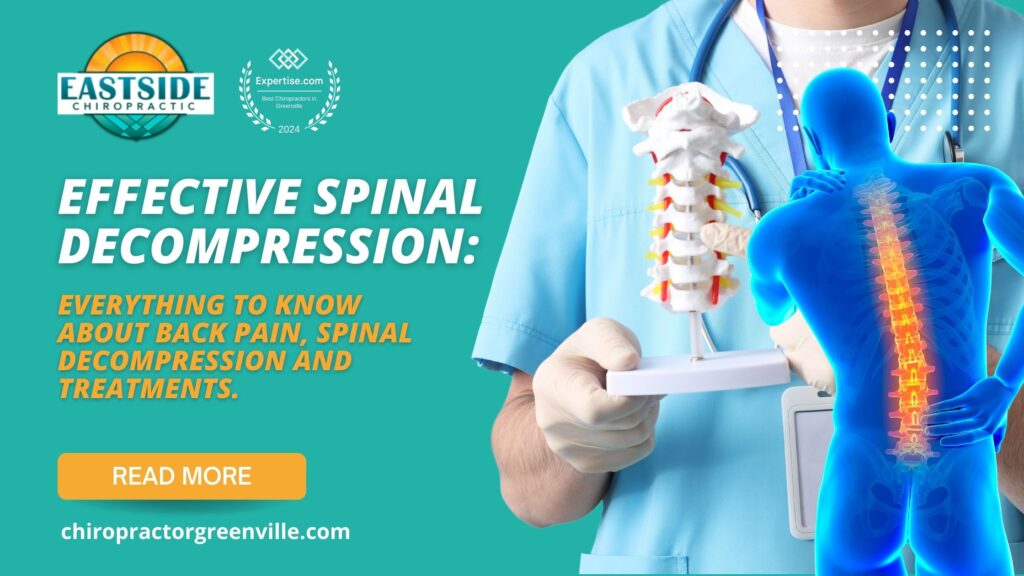Introduction
Are you experiencing persistent back pain or discomfort? Your spine might need some TLC. Proper spinal health is crucial for overall well-being, and spinal decompression can significantly help alleviate discomfort. But here’s the kicker: you can do it yourself from the comfort of your home! In this article, we are going to dive into the nitty-gritty of DIY spinal decompression and how it can benefit you.
Understanding Spinal Decompression
What is Spinal Decompression?
Spinal decompression is a therapeutic technique aimed at relieving pressure on the vertebral discs, which can cause pain and discomfort. Essentially, it involves stretching the spine to create negative pressure, allowing herniated or bulging discs to retract, promoting the flow of healing nutrients to the discs.
How Does Spinal Decompression Work?
In both traditional and DIY methods, the main goal is to elongate the spine. Traditional methods often involve specialized equipment and professional assistance, whereas DIY methods use simpler techniques and can be performed at home.
Benefits of DIY Spinal Decompression
Cost-Effectiveness
Visiting a chiropractor or physical therapist can be expensive. DIY spinal decompression techniques offer a budget-friendly alternative.
Convenience
You can perform these exercises anytime, anywhere. No need for appointments — your living room becomes your treatment room.
Control and Customization
DIY techniques allow you to control the intensity and duration of your sessions, tailoring the experience to your comfort level and needs.
Precautions and Safety Measures
Understanding Your Limits
One of the most critical aspects of DIY spinal decompression is recognizing your physical limits. Overextending or improperly performing exercises can cause more harm than good.
Consulting Healthcare Professionals
Before starting any new exercise regimen, it’s a good idea to consult with a healthcare professional to ensure it’s suitable for your specific condition.
Equipment Safety
Using the right equipment correctly is essential. If you’re incorporating tools like inversion tables or foam rollers, ensure they’re in good condition and you’re familiar with their usage.
DIY Spinal Decompression Techniques
Spinal Stretches
Hanging Exercises
A simple yet effective way to decompress the spine is by hanging from a bar. This can be done using gym equipment or a sturdy crossbeam at home. Just hold onto the bar and let your body weight gently stretch your spine.
Cat-Cow Stretch
The Cat-Cow stretch, a common yoga pose, involves arching the back (cat pose) and then dipping it (cow pose). This gentle motion helps stretch and mobilize the spinal discs.
Child’s Pose
Another yoga favorite, the Child’s Pose, involves kneeling on the floor and stretching your arms forward while sitting back onto your heels. This position gently stretches the spine and improves flexibility.
Inversion Therapy
How to Use an Inversion Table
Inversion therapy involves hanging upside down using an inversion table to create spinal traction. Start with short sessions and gradually increase the duration as you become comfortable.
Benefits and Risks
While effective, inversion therapy isn’t suitable for everyone. Individuals with high blood pressure, heart conditions, or glaucoma should avoid this method.
Foam Rolling
Techniques for Lower Back
Use a foam roller to apply gentle pressure to the lower back, rolling back and forth to relieve tension. This can help improve blood flow and loosen tight muscles.
Techniques for Upper Back & Shoulders
Similarly, foam rolling the upper back and shoulders can alleviate pain and stiffness. Focus on areas that feel tight, using caution around the spine itself.
Step-by-Step Guide to Decompress Your Spine by Yourself
Warm-Up Routine
Start with a light warm-up to get your muscles ready. Simple movements like walking or light stretching can help.
Recommended Exercises
Combine a series of the aforementioned stretches and techniques, such as hanging exercises, Cat-Cow stretches, and foam rolling.
Post-Exercise Cool Down
Finish with a cool-down routine to help normalize your heart rate and stretch the muscles further. Child’s Pose or gentle stretching works well here.
Creating a Spinal Health Routine
Daily and Weekly Plans
Consistency is key. Aim to include spinal decompression exercises into your daily routine for maximum benefit.
Integrating Decompression into Your Lifestyle
Incorporate these exercises into your day-to-day activities. For example, take breaks to do a quick stretch at work or use a foam roller while watching TV.
Importance of Consistency
Regular practice is necessary for noticeable results. Treat your spinal health routine as an essential part of your wellness regimen.
When to Seek Professional Help
Signs Your DIY Methods May Not Be Enough
If you’re still experiencing pain or discomfort despite regular decompression exercises, it might be time to consult a professional.
Role of Professional Spinal Decompression
Professionals have the tools and expertise to offer more intensive decompression treatments.
Benefits of Consulting Eastside Chiropractic PA in Taylors, SC
At Eastside Chiropractic PA, located in Taylors, SC, the team offers advanced spinal decompression therapy. If your DIY efforts aren’t cutting it, their experts can provide the relief you need.
Conclusion
To wrap things up, taking care of your spine is essential for overall health and mobility. DIY spinal decompression techniques are a cost-effective and convenient way to maintain your spinal health at home. Start incorporating these practices into your routine, but don’t hesitate to seek professional help if needed. Remember, a happier spine means a happier you!
FAQs
1. What are the signs that I need spinal decompression?
Persistent back pain, stiffness, and discomfort, especially after periods of inactivity, are common signs.
2. How often should I perform DIY spinal decompression exercises?
Aim for daily practice, with each session lasting around 10-15 minutes for best results.
3. Can spinal decompression help with chronic back pain?
Yes, many people find relief from chronic pain through regular spinal decompression exercises.
4. Is it safe to perform spinal decompression at home?
Generally, yes, but it’s crucial to follow proper techniques and consult a healthcare professional if you have any concerns.
5. How long does it take to see results from spinal decompression?
Results can vary, but many individuals notice improvements within a few weeks of consistent practice.
